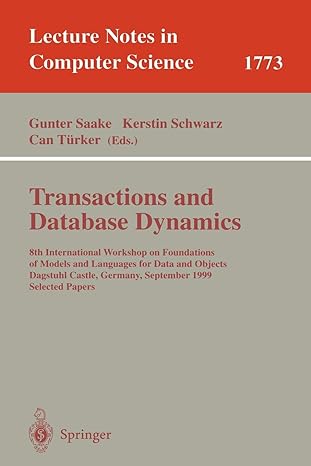Question
In the following we check the diffusion properties of AES after a single round. Let A =(A0,A1,A2,A3)=(0x01000000, 0x00000000, 0x00000000,0x00000000) be the input in 32-bit chunks
 In the following we check the diffusion properties of AES after a single round. Let A =(A0,A1,A2,A3)=(0x01000000, 0x00000000, 0x00000000,0x00000000) be the input in 32-bit chunks to a 128-bit AES. Note that Ai is a column vector. The subkeys for the computation of the result of the first round are W0,...,W7 (with 32 bits each) and are given by W0 =(0x2B7E1516), W1 =(0x28AED2A6), W2 =(0xABF71588), W3 =(0x09CF4F3C), W4 =(0xA0FAFE17), W5 =(0x88542CB1), W6 =(0x23A33939), W7 =(0x2A6C7605) where the initial subkey is K0=(Wo,W1,W2,W3) and the next subkey is K1=(W4,W5,W6,W7). Find out the state after the first round (with the steps AddKey K0, SubBytes, ShiftRow, MixColumn and AddKey K1). For the solution, you might want to write a short computer program or use an existing one. 1. Compute the output of the first round of AES with the input A and the subkeys K0 and K1. Write your answer as four column vectors (B0,B1,B2,B3) in hexadecimal: B0= , B1= , B2= , and B3= . 2. Repeat 1 for the case that all input bits in A are zero. Write your answer as four column vectors (C0,C1,C2,C3) in hexadecimal: C0= , C1= , C2= , and C3= . 3. How many output bits have changed? Note that we only consider a single round, after every further round, more output bits will be affected (avalanche effect)
In the following we check the diffusion properties of AES after a single round. Let A =(A0,A1,A2,A3)=(0x01000000, 0x00000000, 0x00000000,0x00000000) be the input in 32-bit chunks to a 128-bit AES. Note that Ai is a column vector. The subkeys for the computation of the result of the first round are W0,...,W7 (with 32 bits each) and are given by W0 =(0x2B7E1516), W1 =(0x28AED2A6), W2 =(0xABF71588), W3 =(0x09CF4F3C), W4 =(0xA0FAFE17), W5 =(0x88542CB1), W6 =(0x23A33939), W7 =(0x2A6C7605) where the initial subkey is K0=(Wo,W1,W2,W3) and the next subkey is K1=(W4,W5,W6,W7). Find out the state after the first round (with the steps AddKey K0, SubBytes, ShiftRow, MixColumn and AddKey K1). For the solution, you might want to write a short computer program or use an existing one. 1. Compute the output of the first round of AES with the input A and the subkeys K0 and K1. Write your answer as four column vectors (B0,B1,B2,B3) in hexadecimal: B0= , B1= , B2= , and B3= . 2. Repeat 1 for the case that all input bits in A are zero. Write your answer as four column vectors (C0,C1,C2,C3) in hexadecimal: C0= , C1= , C2= , and C3= . 3. How many output bits have changed? Note that we only consider a single round, after every further round, more output bits will be affected (avalanche effect)
Step by Step Solution
There are 3 Steps involved in it
Step: 1

Get Instant Access to Expert-Tailored Solutions
See step-by-step solutions with expert insights and AI powered tools for academic success
Step: 2

Step: 3

Ace Your Homework with AI
Get the answers you need in no time with our AI-driven, step-by-step assistance
Get Started


